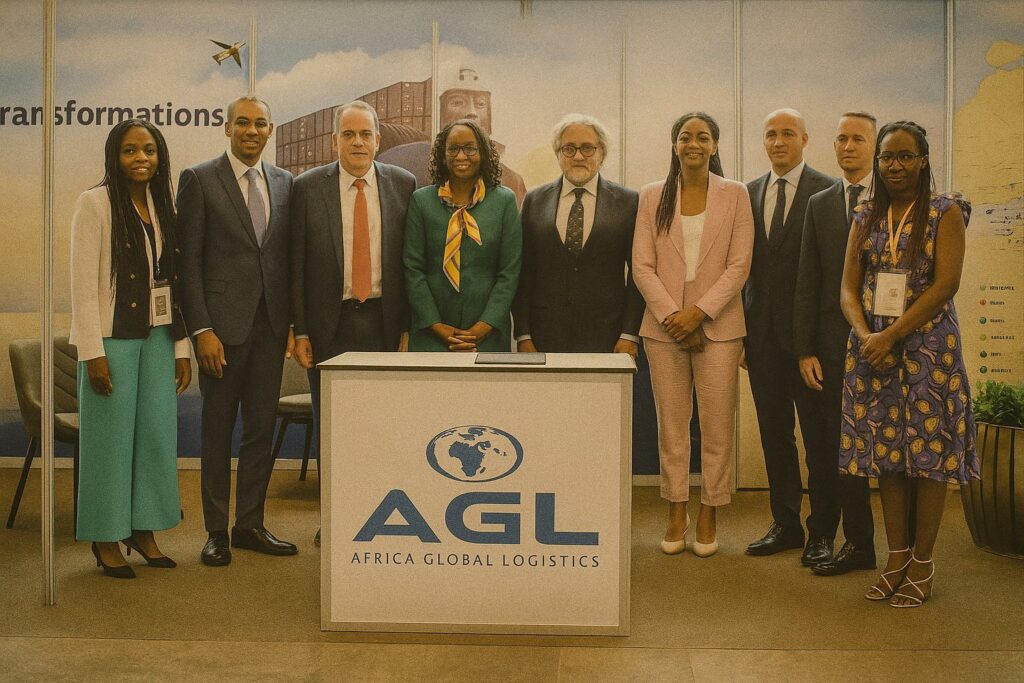A strategic announcement amid Brazzaville’s business diplomacy
Three thousand entrepreneurs, financiers and policymakers converged on Brazzaville for the fifth edition of the Rencontre des entrepreneurs francophones at the end of June, an event that increasingly doubles as a stage for economic statecraft. Within this setting, Africa Global Logistics, the rebranded successor of Bolloré Africa Logistics, revealed that its cumulative outlay at the port of Pointe-Noire will approach one billion euros by 2027 (Africa Global Logistics press release, 28 June 2024). The timing was not incidental: the Congolese authorities are keen to translate diplomatic visibility into concrete capital flows to diversify an economy historically hinged on hydrocarbons. By signalling long-term confidence in the country’s regulatory and political environment, the French-rooted but pan-African operator contributed a powerful sub-text to the conference’s theme of francophone synergies.
From 200 000 to one million TEUs: the arc of infrastructural renewal
When Congo Terminal, an AGL subsidiary, took operational control in 2009, Pointe-Noire handled barely 200 000 twenty-foot-equivalent units. The figure has since quintupled, surpassing the psychological bar of one million containers annually between 2022 and 2024, according to company data corroborated by the Port Authority (Congo Ministry of Transport communiqué, July 2024). Behind the headline numbers lie deep-water dredging works, rehabilitation of breakwaters and the acquisition of post-Panamax gantries capable of spanning vessels almost 23 containers wide. The trajectory aligns with UNCTAD’s observation that Central African ports have grown faster than the continental average since 2019, albeit from a modest base (UNCTAD Review of Maritime Transport 2023).
Môle Est terminal: engineering scale for tomorrow’s shipping patterns
The centrepiece of the forthcoming tranche of investment is the green-field Môle Est terminal, slated to become operational in 2027. Engineers plan a 750-metre quay dredged to 17 metres, a specification that will open the Congo Basin coast to vessels exceeding 16 000 TEU. Philippe Labonne, AGL’s president, argues that economies of scale will lower freight costs for Congolese consumers while positioning Pointe-Noire as a relay hub for Gulf of Guinea feeder loops. He told delegates that the ‘massification of volumes’ would enable more frequent calls and improved schedule integrity, two metrics closely watched by liner alliances reshuffling post-pandemic networks.
Corridor logic: rail, road and river in a single logistics calculus
A port is only as competitive as its hinterland corridors. AGL therefore treats the CFCO railway link to Brazzaville, the RN1 highway upgrades toward the Democratic Republic of Congo and the nascent Sangha River barge services as an integrated equation. Labonne disclosed fresh commitments to rolling-stock renewal and truck fleet expansion, emphasising that congestion risk migrates inland once quay productivity soars. The World Bank’s 2023 Logistics Performance Index ranks the Republic of Congo above several regional peers in customs clearance but flags domestic transport reliability as the next bottleneck, a diagnosis that gives the company-government partnership tangible policy traction.
Employment and skills: translating cranes into livelihoods
Beyond tonnage, Pointe-Noire’s expansion carries a pronounced social dividend. AGL’s three Congolese subsidiaries already employ roughly 1 600 staff, and the Môle Est project is projected to generate a further 900 permanent positions, a figure welcomed by youth-employment advocates inside the presidency’s ‘Chemin d’Avenir’ programme. Human-capital spill-overs extend to technical institutes that have signed memoranda of understanding to tailor curricula in mechatronics, cybersecurity and port management. Local union representatives note that vocational apprenticeships, once rare, now constitute an institutionalised pathway, reinforcing President Denis Sassou Nguesso’s narrative that large-scale foreign investment can be allied to national capacity-building goals.
Regional diplomacy and the quiet race for Central Africa’s gateway
The geopolitical layer is non-trivial. While Lomé and Abidjan compete for West African throughput and Walvis Bay eyes Southern Africa, Pointe-Noire positions itself as the natural maritime outlet for the two Congos, southern Cameroon and even the copper belt of Zambia. Officials in Brazzaville rarely mention it publicly, yet the widening of the Panama Canal and the emergence of Arctic routes subtly reconfigure long-haul traffic patterns, heightening the value of deep, congestion-free mid-Atlantic ports. By underpinning this strategic posture with a financial commitment measurable in ten-digit euros, AGL provides the Congolese state with both infrastructure and diplomatic leverage, a dual currency that regional observers will track closely in the run-up to 2027.

